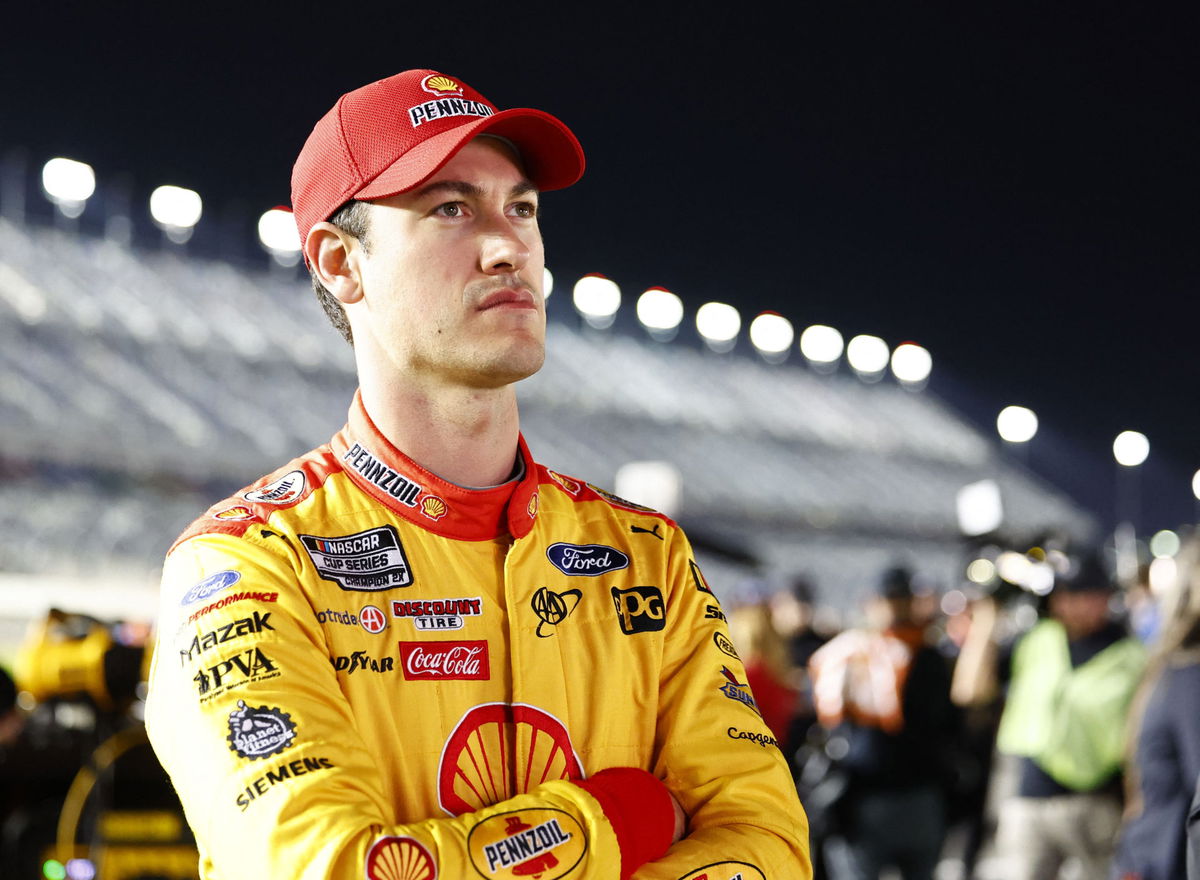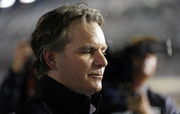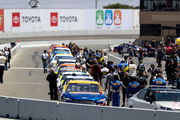
USA Today via Reuters
Feb 15, 2023; Daytona Beach, Florida, USA; NASCAR Cup Series driver Joey Logano (22) during qualifying at Daytona International Speedway. Mandatory Credit: Mike Dinovo-USA TODAY Sports

USA Today via Reuters
Feb 15, 2023; Daytona Beach, Florida, USA; NASCAR Cup Series driver Joey Logano (22) during qualifying at Daytona International Speedway. Mandatory Credit: Mike Dinovo-USA TODAY Sports
Ty Gibbs made headlines when he cashed a cool $1 million check after clinching the NASCAR in-season tournament win at the Brickyard 400, outdueling Ty Dillon in a dramatic finale. Fans saw the number, saw the trophy, and saw the laps that earned it. But rewind a few months, and there was another driver by the name of Joey Logano who took home the exact same payday. But it was all without turning a single lap or by completing a last-lap pass. No restarts, no contact, no checkered flag.
Watch What’s Trending Now!
Instead, he got the million for something far more mundane: showing up for NASCAR, doing media hits, podcasts, and appearances. Basically, being a company man in a sport where, funny enough, drivers don’t own the rights to themselves. Wild, right? But there’s a deeper issue here, one that’s quietly reshaping the future of NASCAR.
ADVERTISEMENT
Why drivers are now paid additionally by NASCAR
In 2025, NASCAR launched its first-ever Driver Ambassador Program, designed to reward Cup Series drivers for their off-track promotional work. Think media interviews, social-media engagement, autograph sessions, and more. The top scorer, Joey Logano, earned a cool $1 million for his early-season efforts, followed by Kyle Larson in second place. The idea by NASCAR is simple. Incentivize drivers to volunteer beyond their racing obligations to raise the sport’s profile and drive audience engagement.
Here’s the catch: drivers don’t actually own the rights to their name, image, or likeness in NASCAR. Team ownership holds those NIL rights, since teams control driver contracts and sponsor deals. So unless NASCAR compensates drivers directly, any media request becomes an “extra” ask, one that offers minimal benefit unless it’s built into their earnings. Corey Lajoie explains it well. Teams control driver rights. So NASCAR created this ambassador program as a workaround to align the sport’s marketing goals with drivers’ contractual constraints.
👮 Owners know how valuable charters are and will be in the future.
👮 Permanent charters and ownership of NIL rights of drivers/team are being fought for.
🏠 Why do we need a committee?
🚗 The teams completely own the driver’s rights which is how they sell sponsorship. Therefore…— Corey LaJoie (@CoreyLaJoie) July 31, 2025
ADVERTISEMENT
From NASCAR’s viewpoint, the Driver Ambassador Program solves a tricky problem. It helps boost visibility in a media-saturated world without disrupting team-driven sponsorship models. The millions from new media rights deals fund these payouts, making it a win–win. Drivers get paid for supporting the sport beyond their race duties. And fans get more access.
On the other hand, critics argue it underscores an unfair imbalance. Why should drivers (the face of the sport) be required to earn extra money just to promote the product they’re stewarding on race day? And if sponsors already demand media appearances, some feel NASCAR should simply mandate media hours within driver contracts rather than paying massive bonuses to incentivize what should be standard.
ADVERTISEMENT
This driver ambassador bonus isn’t going away. NASCAR has committed to at least two terms this season, each with a $1 million prize. But if fans and drivers demand more transparency and fairness about how promo work is mandated, it may lead to structural changes in how driver contracts are negotiated.
Top Stories
Dale Earnhardt’s Grandson’s NASCAR Future Remains Unhindered Despite Major Team Rebranding Ahead of 2026

Richard Childress’ Champion Driver Joins Forces with HMS Crew Chief to Make Last Minute Chili Bowl Entry

Jeff Gordon’s NASCAR Rival Issues Public Verdict Years After His Apology

Cup Legend to Step Down From His Role as NASCAR Organization Names New Executive Leader

Ross Chastain Recalls the Relentless Grind That Kept His NASCAR Dream Alive After Sponsorship Spin-off

Why NASCAR’s $1M bonus isn’t just about the money
With NASCAR’s Driver Ambassador Program, drivers aren’t just cashing in; they’re buying in. For Ross Chastain, the Driver Ambassador Program aligned perfectly with his personal philosophy. “I want to promote myself,” he said. “So, invest in myself and it’s always worked out… I did with the program, and it turned out pretty good.” Chastain has long been known as a grinder, and this gave him a structured way to turn off-track hustle into direct reward.
ADVERTISEMENT
Kyle Busch, often blunt in his assessments, didn’t hold back either. “From the driver’s perspective, just the work that you do and being rewarded for that…was beneficial,” he said. Busch praised the flexibility. Drivers could opt into appearances and media work, not be forced into them. That autonomy, he explained, made participation feel like a smart business decision instead of an extra burden.
Joey Logano, the program’s first $1 million winner, echoed that view. “You become more popular,” Logano said. “It’s better for your sport, better for your sponsors, and better for your team.” In his eyes, everyone wins. More exposure brings stronger sponsor connections, deeper fan relationships, and elevated team visibility.
And maybe that’s the real value of the program. It reframes promotion as a growth opportunity, not a chore. NASCAR’s media exposure isn’t just their problem to solve anymore. It becomes a shared investment between the league and the drivers. Some fans might scoff at millionaires needing a bonus to smile for the camera. But in a sport where contracts are tightly owned and driver time is sold like billboard space, this program gives racers something they rarely have: agency. And for that, the money feels like the least important part.
ADVERTISEMENT
ADVERTISEMENT
ADVERTISEMENT
ADVERTISEMENT

